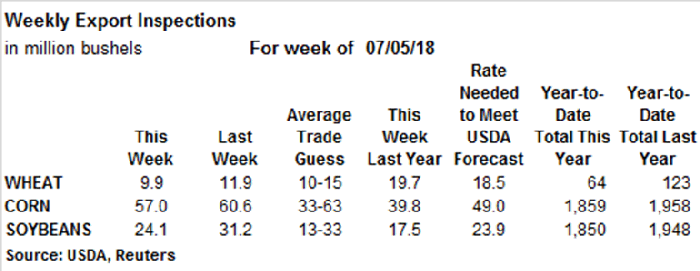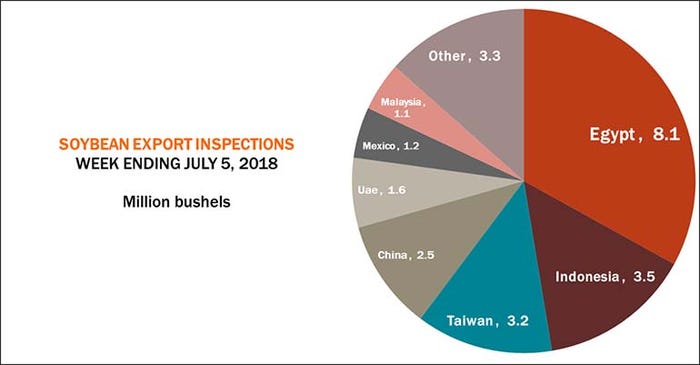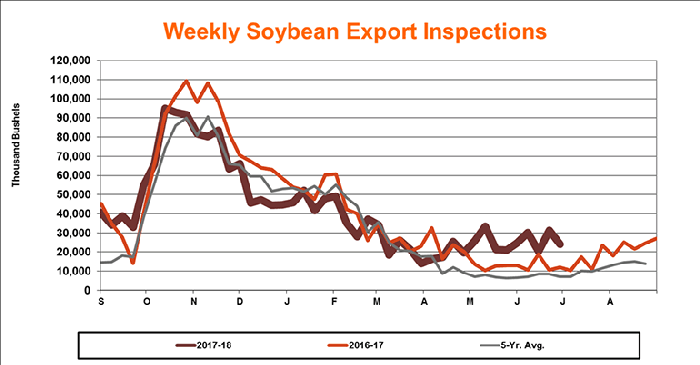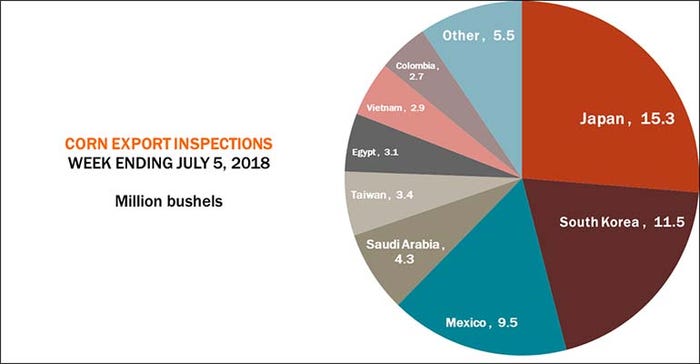3 Min Read

AG SHIPPERS SPEAK OUT: During House subcommittee hearing June 15, ag industry members discuss lasting negative impact as ocean carriers to decline to carry U.S. agriculture commodity exports.3dmentat/ThinkstockPhotos
It was another mixed week for grain export inspections for the week ending July 5 – notable for wrapping up a day after the Independence Day holiday and a day before the latest U.S.-China tariffs were enacted. All things considered, corn export inspections came in strong, while soybeans fared decently and wheat sputtered.

Soybean export inspections reached 24.1 million bushels last week – coming in moderately below the prior week’s total of 31.2 million bushels but landing in the middle of trade expectations that ranged between 13 million and 33 million bushels. The amount also bested the total from a year ago, at 17.5 million bushels, and stays just ahead of the weekly rate needed to reach USDA forecasts, now at 23.9 million bushels. Marketing year-to-date totals for 2017/18 reached 1.850 billion bushels, down 5% from last year’s pace.
Egypt was the No. 1 destination for U.S. soybean export inspections last week, with 8.1 million bushels. Other top destinations included Indonesia (3.5 million), Taiwan (3.2 million) and China (2.5 million).
“This shipment, aboard the Star Jennifer out of Puget Sound, presumably will be rerouted to another destination,” notes Farm Futures senior grain market analyst Bryce Knorr. “It was inspected on July 5 – the day before the tariffs went into effect.”


Corn export inspections last week came in at a healthy 57.0 million bushels – slightly lower than the prior week’s total of 60.6 million bushels, but on the high end of the trade guess, which ranged between 33 million and 63 million bushels. Totals also stayed ahead of the weekly rate needed to reach USDA forecasts, now at 49.0 million bushels. For the 2017/18 marketing year, total corn export inspections have reached 1.859 billion bushels, down 5% from the prior marketing year.
Japan was the No. 1 destination for U.S. corn export inspections last week, with 15.3 million bushels. Other top destinations included South Korea (11.5 million), Mexico (9.5 million), Saudi Arabia (4.3 million) and Taiwan (3.4 million).
“Corn numbers were good, but wheat was a disappointment, keeping the trend below average,” Knorr says.


Wheat export inspections last week totaled just 9.9 million bushels – falling just below the average trade guess of 10 million to 15 million bushels. It also fell slightly behind the prior week’s total of 11.9 million bushels and moderately behind the weekly rate needed to reach USDA forecasts, now at 18.5 million bushels. So far in the 2018/19 marketing year, U.S. wheat export inspections have reached 64 million bushels – roughly half of the pace set by the prior marketing year.
Guatemala was the No. 1 destination for U.S. wheat export inspections last week, with 1.9 million bushels. Other top destinations included Taiwan (1.8 million), the Philippines (1.5 million), Japan (1.3 million) and Nigeria (1.2 million).


About the Author(s)
Subscribe to receive top agriculture news
Be informed daily with these free e-newsletters
You May Also Like






